
Visiting the Rigi used to make people ill – why?
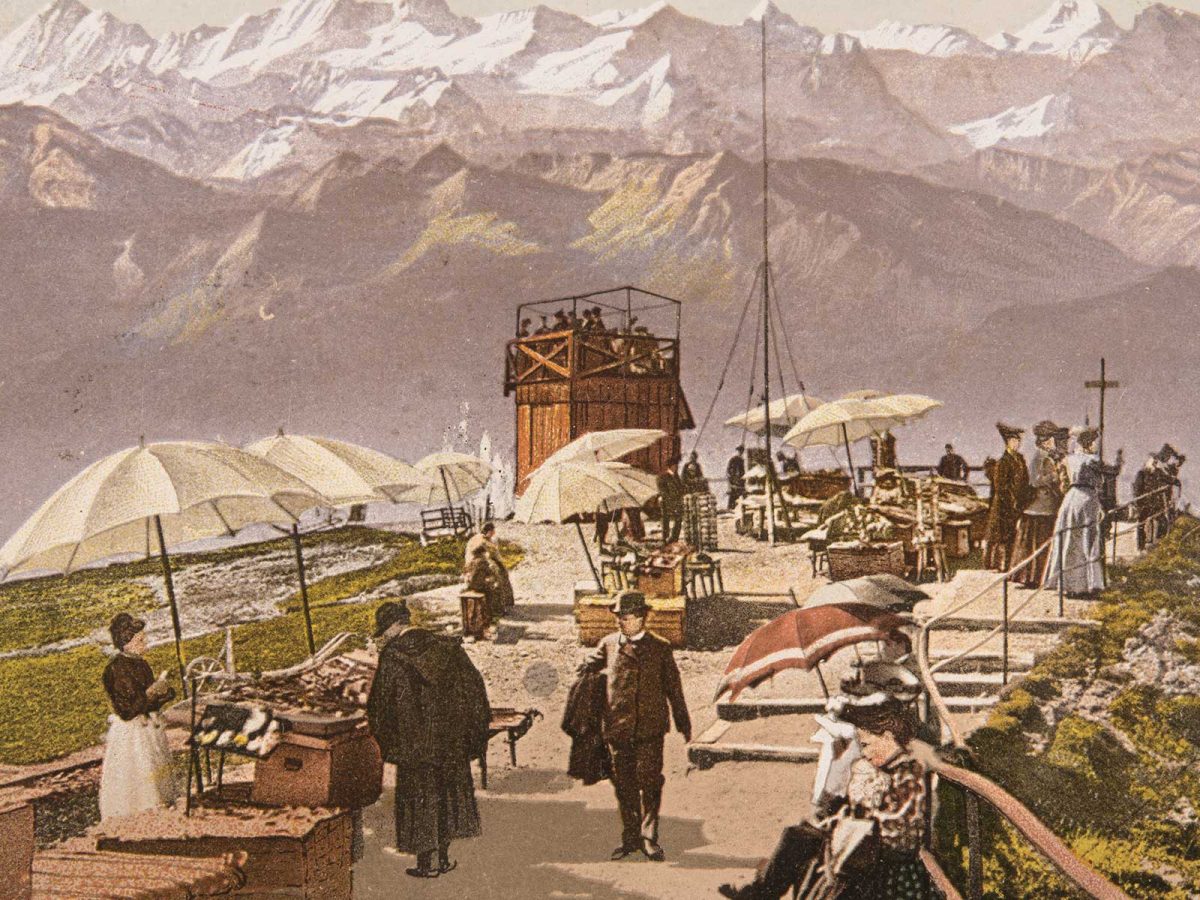
Around a century ago, many people complained of severe diarrhoea and vomiting following a visit to the Swiss Rigi mountain. For a long time, people blamed the Rigikrankheit (as the condition was known) on the mountain air, until a high profile defamation trial uncovered a major environmental scandal.
Around 1900, the Rigikrankheit barely merited a mention. It was just considered one of those things. Hoteliers, their families and employees often experienced repeated bouts of severe vomiting and diarrhoea during the tourist season. Sometimes it also affected up to 50% of guests. Hoteliers blamed it on the mountain air. It was also thought to be due to overindulging on food and drink, especially among children, eating too much fruit, and drinking cold water when overheated.
Swissinfo regularly publishes articles from the Swiss National Museum’s blog External linkdedicated to historical topics. The articles are always written in German, usually also in French and English.
In 1909, however, the Rigikrankheit became too much, or “virulent” as a subsequent investigative report stated. Entire classes who had visited the Rigi on a school trip fell ill, severely so in some cases. The Zurich city doctor documented 287 cases, which he had personally encountered. In one class, all the children were afflicted with severe vomiting and diarrhoea, and 21 of 26 pupils in another class fell ill, plus all the adults.
School trips banned
The authorities in Zurich and Winterthur forbade their teachers from taking any more classes to the Rigi. And the Zurich Department of Health demanded measures in writing from Schwyz Cantonal Council as to how such incidents could be avoided in future. “We will not tolerate a situation whereby hundreds of people are exposed to the risk of serious, possibly even fatal, illness following a visit to the Rigi.”
The Rigi was Europe’s ‘in’ mountain during the 19th century. By 1840, it had about 40,000 visitors every summer, rising to 70,000-80,000 following the construction of Europe’s first mountain railway in 1871. There were many grand hotels at Kulm, Staffel, Klösterli, Rigi-First, Scheidegg and Kaltbad where people could stay. The mountain had a total of about 2,000 hotel beds.
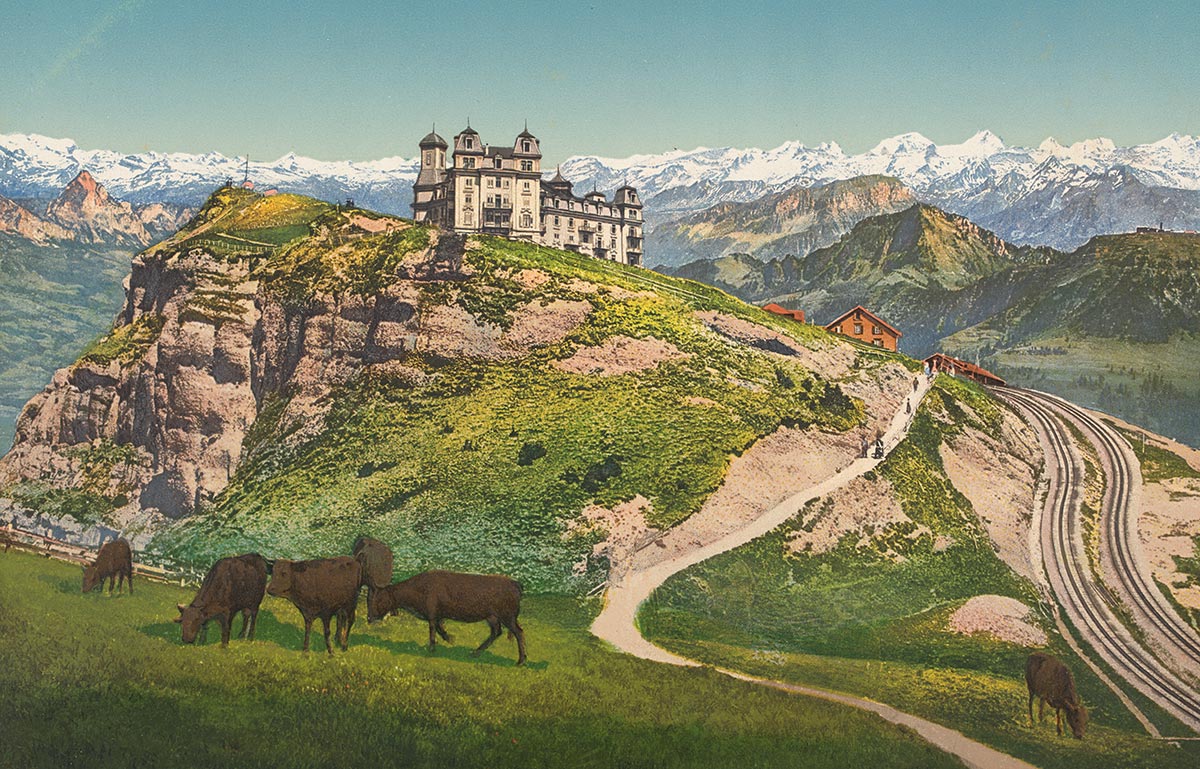
Hoteliers always referred to positive health impacts as a selling point. Fresh air and whey curesExternal link were supposed to benefit the healthy just as much as the sick and convalescing. This naturally made the Rigikrankheit even worse for business, especially from 1909 when it became too big to hide or water down. Schwyz Cantonal Council immediately commissioned district physician Carl Real to launch an investigation following the announcement by the Zurich authorities. The report came out at the end of 1909 and it unmistakeably showed that it was not the air but the, in some cases, scandalous state of the drinking water supply that was behind the Rigikrankheit. The cause was coli bacteria, traces of which were repeatedly found in the water both at that time and in subsequent years.
The large Kulm and Staffel hotels were the worst. They drew drinking water from different sources as well as from the rainwater on the roof. All the sources merged into a big reservoir – including the wastewater from the hotels located higher up, which was expelled into a field from where it flowed down almost unfiltered into a well further down the mountain. It was then pumped back up from the reservoir as drinking water to the hotels higher up.
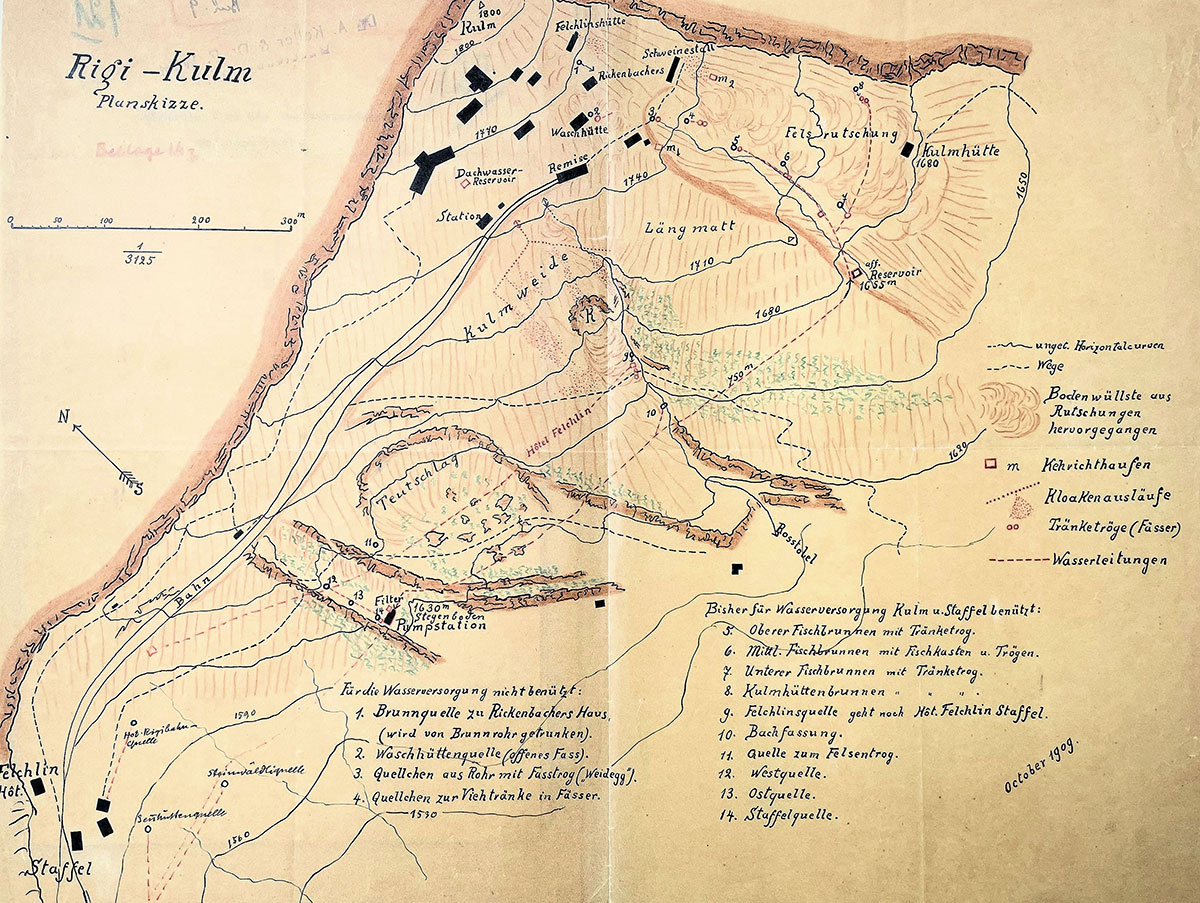
At one location, the water was pumped out from the ground in a marshy area. Humans and bovine excrement contaminated that particular water hole, which the report referred to as a “source” in inverted commas. Another spring initially flowed into an open cattle trough; the overflow was then diverted into the drinking water reservoir.
In parallel with the investigations by Carl Real, Professor Oskar Wyss, Head of Zurich Hygiene Institute also got to work. The manager of the Kulm hotel had asked the professor, who was his friend, for an assessment. Wyss enlisted the services of Albert HeimExternal link, a prominent professor of geology, who immediately concurred and described the water supply as “highly dangerous, unsanitary”.
Typhoid in Klösterli
Various measures were undeniably well overdue. As if the Rigikrankheit were not bad enough, there were recurring typhoid epidemics in the Rigi hotels. In 1893, 17 people in the Hotel Sonne in Rigi-Klösterli fell ill, four of whom died, including the porter. The cause was recognised as contamination at source through slurry and wastewater from the First Hotel higher up the mountain. However, the measures demanded by Schwyz were only applied half-heartedly.
In 1909, the environmental scandal finally became public knowledge. The issues with the drinking water supply had already been covered by various newspapers. In 1910, Zurich City Council demanded that school trips only be authorised once the Zurich city or school doctor had investigated the state of the drinking water supply. Progress on the Rigi was slow. Some particularly poor drinking water sources were discarded and the wastewater from Kulm hotel was diverted eastwards over the cliff wall. In any case, even as late as 1912 most of the spring water was captured from old oil barrels buried in the ground.
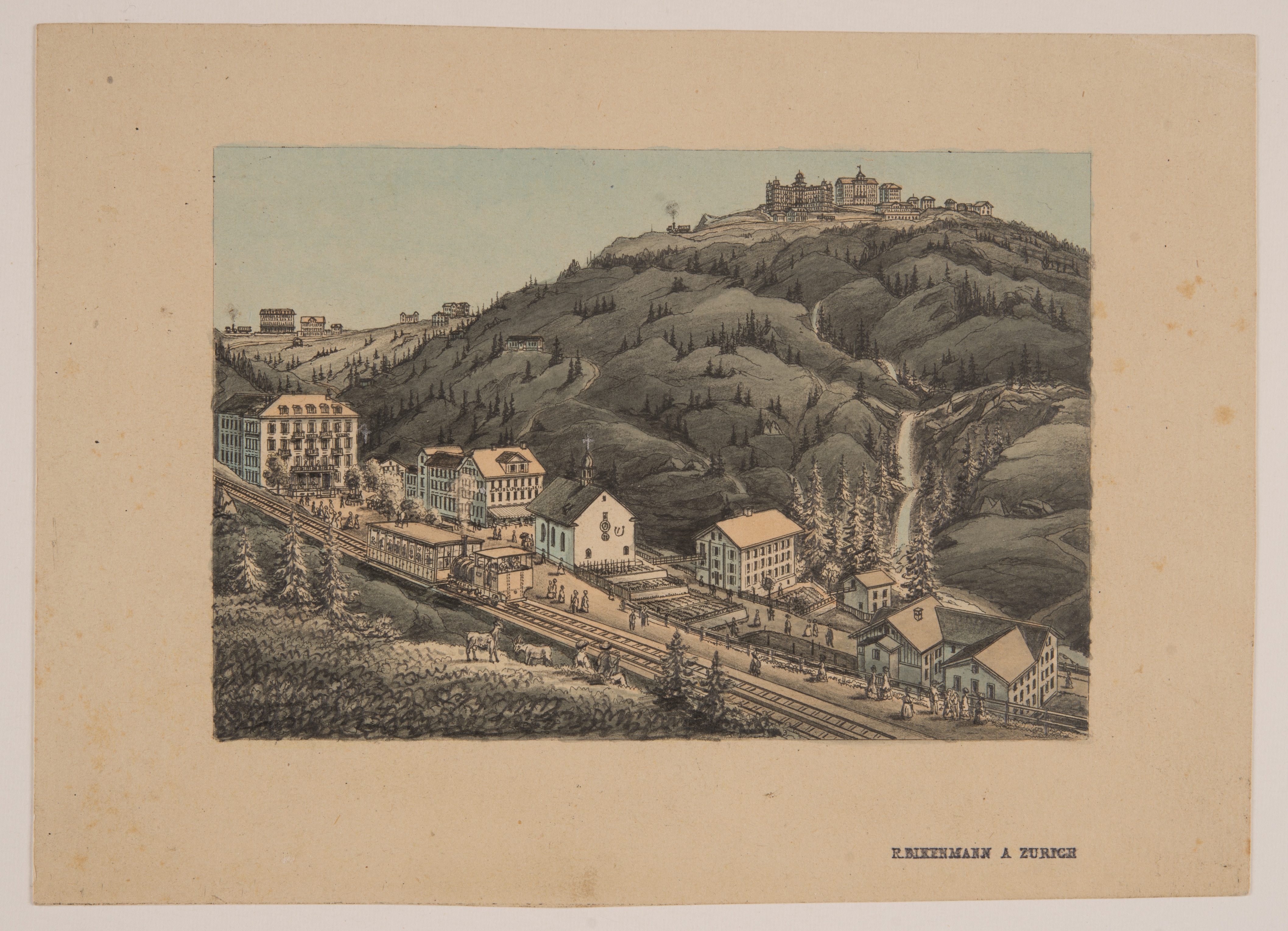
The story gained traction in 1914 and became something of a nationwide cause célèbre. It began with a session of Zurich City Parliament. Communal Councillor Friedrich Ehrismann complained that the canton of Schwyz had refused an investigation by the municipal health authorities. As a result, the ban on school trips remained in force. Then Jean Bürgi, the Schwyz cantonal chemist, weighed in with a lengthy article in the Neue Zürcher Zeitung (NZZ) newspaper. He wrote that the authorities in his canton had done everything they could. But they didn’t want other parties to intervene in their own affairs. The situation was, he argued, dealt with by the district doctor and cantonal chemist being made responsible for checking the sources at least once a year.
‘Don’t touch a drop’
This article elicited a response from Professor Albert Heim. He wrote a lengthy piece in the NZZ calling it “dangerously naïve”, to think one or two checks a year would be enough. A small source could remain perfectly viable in dry weather and then immediately become contaminated again in the rain. Although he agreed that the right measures had been implemented, he also said they were not nearly enough. In the name of the many thousands who had fallen seriously ill, he implored the people of Zurich: “If you go to the Rigi, don’t drink one drop of the water!”
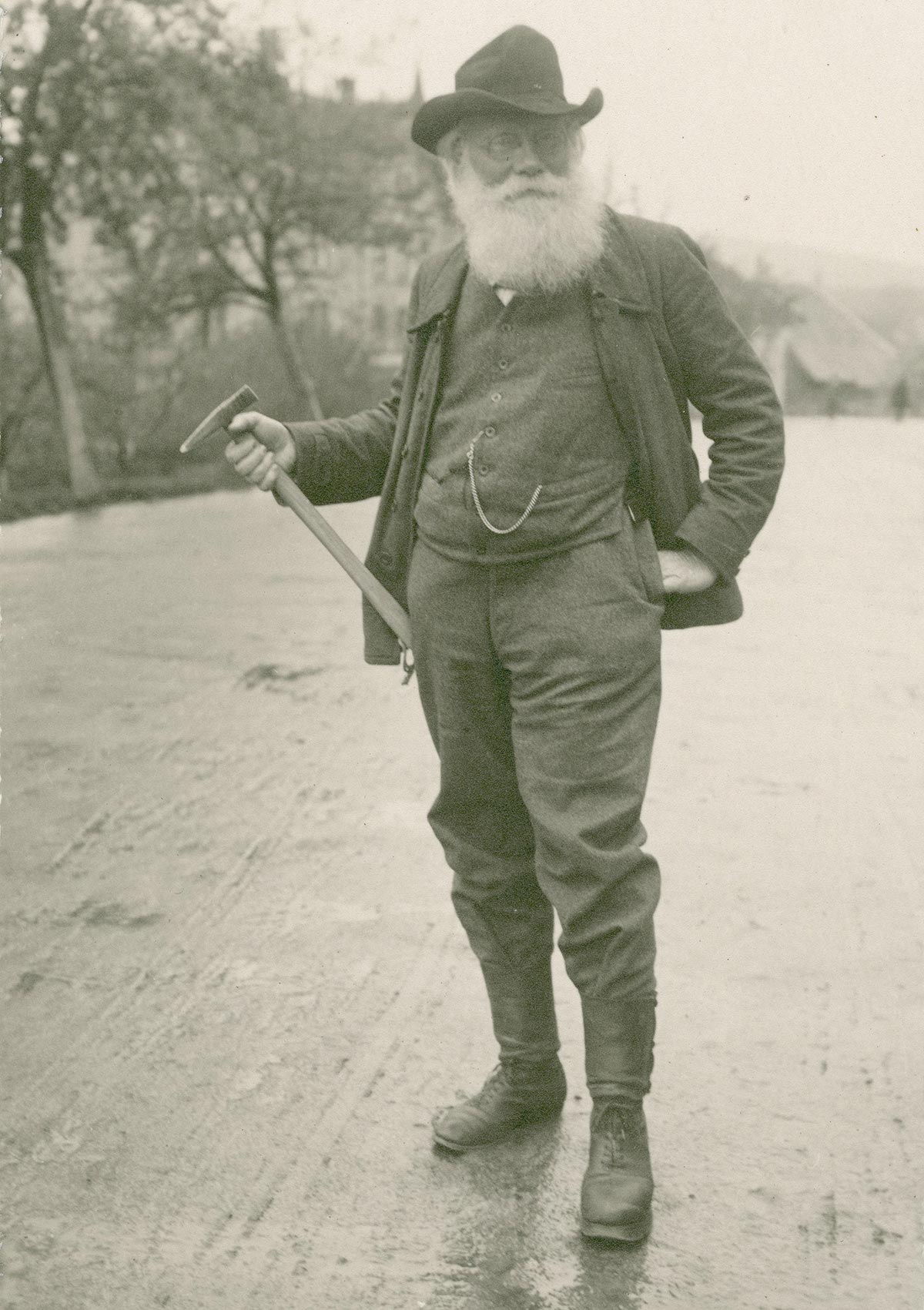
Heim’s article caused a stir, and it was quoted in many Swiss newspapers. Readers wrote into the Schwyz newspaper to express their disagreement with Heim’s claims, the “Zurich water detector”, who denigrated the beautiful Rigi with his “lamentations”. Joseph Fassbind was the Rigi-Klösterli hotelier at the time and also a member of Schwyz Cantonal Council. He may even have prompted the cantonal chemist to write the article published in the NZZ, which surprisingly made no reference at all to his own hotel.
Albert Heim mentioned this in his article – and was promptly sued by Joseph Fassbind for reputational damage. Heim’s article was a bombshell and caused maximum damage according to the libel action. Bookings had fallen massively, claimed Fassbind. Heim contested the allegation that his article had been damaging. The fall in bookings in 1914 had instead been triggered by the outbreak of the First World War, he claimed.
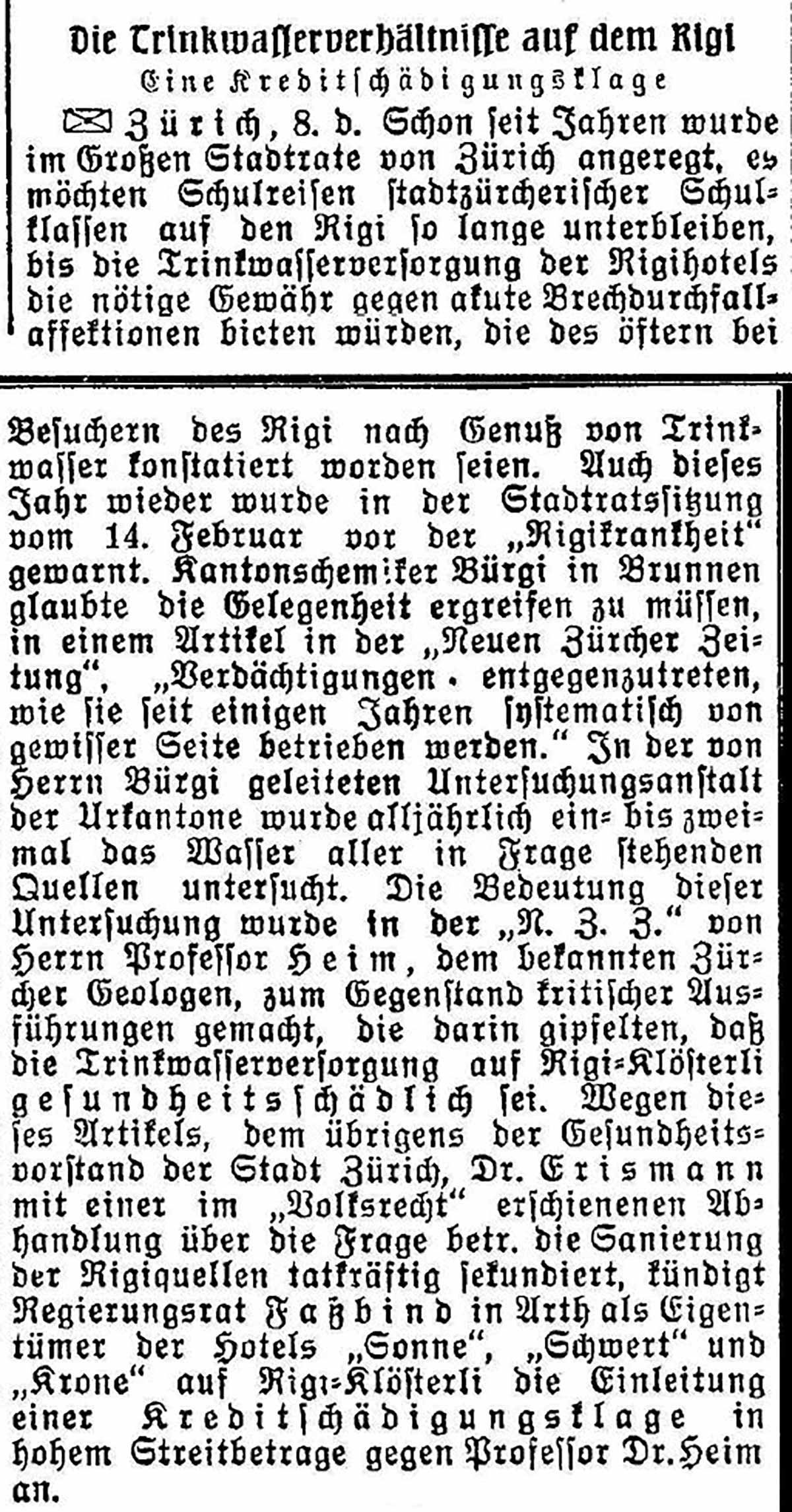
The water on the Rigi was thus tested every year, increasingly so in 1914, “due to the controversial newspaper coverage”. Two hoteliers purchased filter systems, the one in the Kulm hotel was again out of order during the check in August, the hotel was closed in any case due to the war. It rained during the inspections and coli bacteria were found in various sources. It didn’t improve during the ensuing years either.
On 3 October 1917, Zurich District Court rejected Fassbind’s claim. It was proven that the water he used came from a highly questionable source. Fassbind appealed to the Cantonal Supreme Court and subsequently came to an agreement with Albert Heim. The case was dropped, and Heim provided an explanation, whereby the water supply in Klösterli had been sanitised “as far as humanly possible”.
The First World War brought all the Rigi hotels to the brink of ruin. The many tourists from abroad disappeared almost overnight. Most businesses did not survive, and the buildings were knocked down, with some burning to the ground. The last known case of typhoid was in 1932, on the Lucerne side of the Rigi, in Kaltbad. This led to a further improvement in the drinking water supply.
Adi Kälin is a historian and freelance journalist.
The original article on the Swiss National Museum’s websiteExternal link

In compliance with the JTI standards
More: SWI swissinfo.ch certified by the Journalism Trust Initiative































You can find an overview of ongoing debates with our journalists here . Please join us!
If you want to start a conversation about a topic raised in this article or want to report factual errors, email us at english@swissinfo.ch.